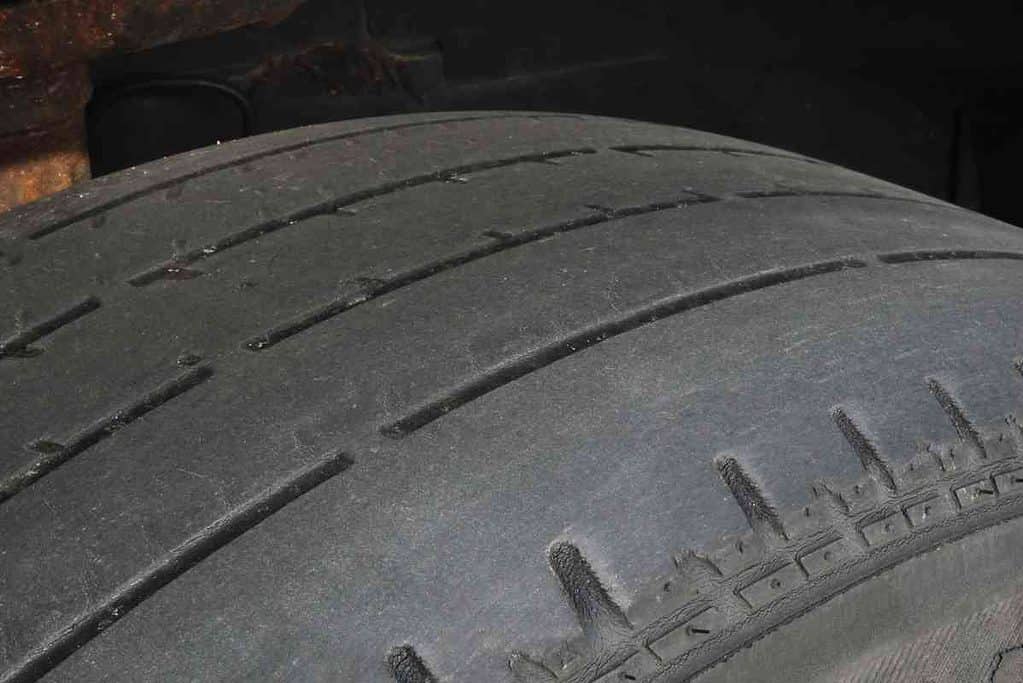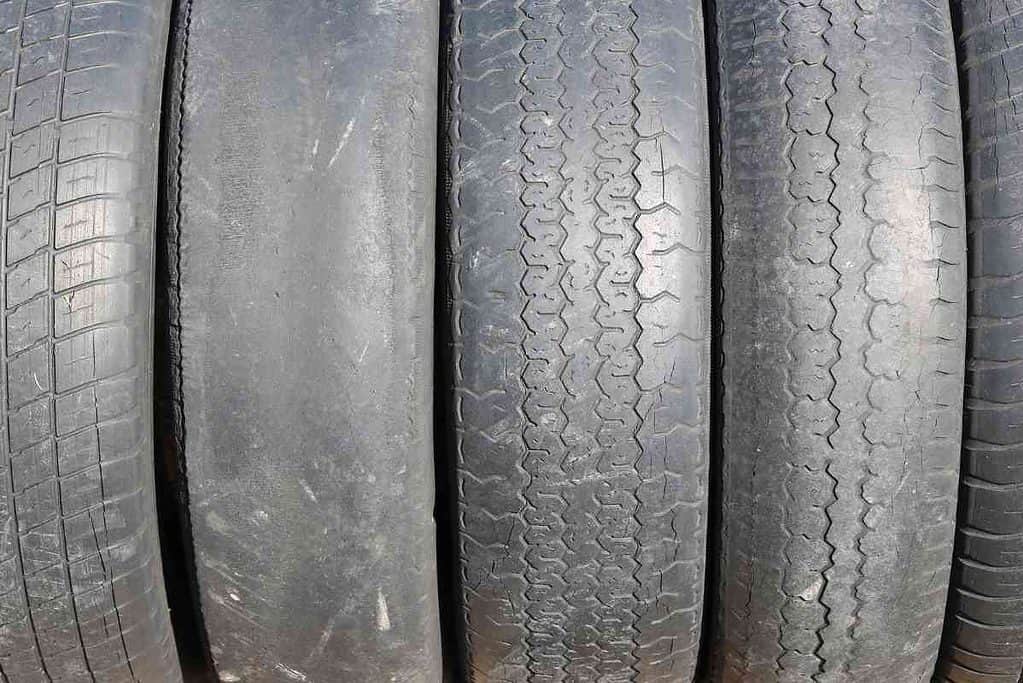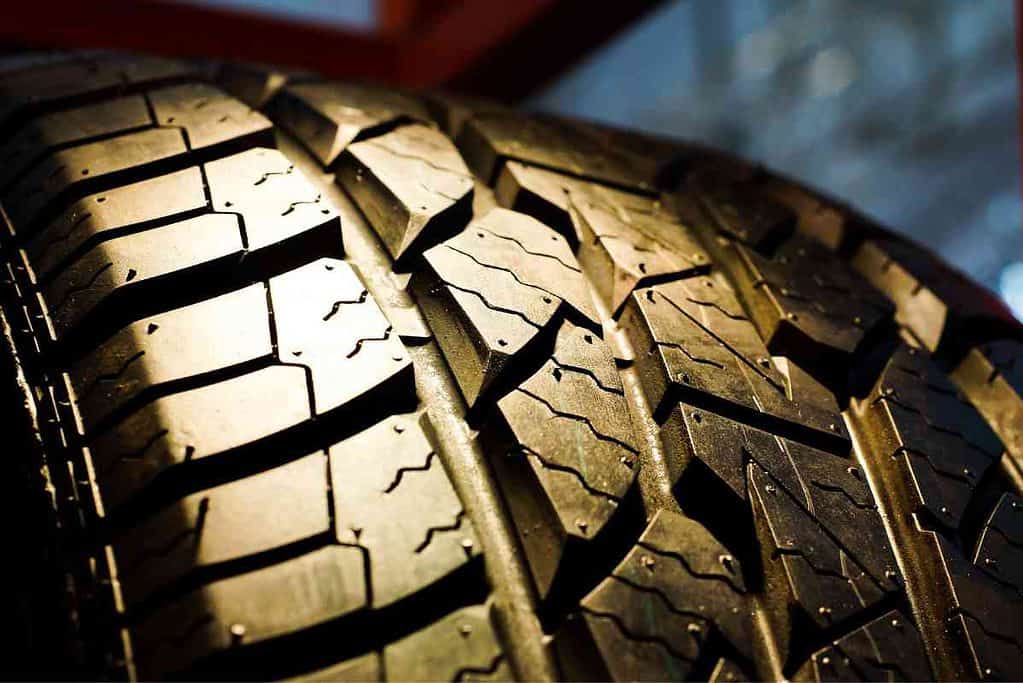Here’s How Long You Can Drive On Bald Tires
You just notice that your front tires seem to have lost their tread, but you don’t have the money to replace them. How long can you drive on bald tires?

How Long Can You Drive On Bald Tires?
All public safety organizations encourage drivers not to ride on bald tires. Tires with little to no tread have a great chance of being punctured and provide less grip on wet road surfaces. These factors increase the risk of an accident, so you should replace bald tires as soon as possible.
Most car owners rarely think about the tires on their vehicles, which is a shame because bad tires can be a huge safety issue.
Considering that these pieces of rubber are the only thing between your family and the asphalt pavement, it might make sense for you to think more seriously about the condition of your tires. This article will discuss the risk of driving on bald tires should you choose to live dangerously.
How Dangerous is Driving on Bald Tire?
According to the folks at Automotive Fleet, over 11,000 accidents are caused yearly by bad tires.
In addition, harsh weather or dangerous road conditions and bad tires account for nearly half of all accidents.
The NHTSA (National Highway Traffic Safety Administration reports that there are 78,000 accidents caused by blowouts, bald tires, or other tire failures, resulting in over 400 deaths yearly.

What is a Bald Tire?
A new tire will have about 10 or 11/32nds of an inch when it comes off the factory line and is installed on a car. Most tires are designed to travel for thousands of miles, although the longevity varies with the manufacturer, driving habits, and road conditions.
The US Department of Transportation issued guidelines on what is considered adequate tire depth for the safe operation of a vehicle.
Any tire tread less than 2/32nds should be replaced, and many states have laws on the books that can be imposed on drivers who do not replace their tires when they reach these limits.
While most people have heard of the “penny test,” but there is a point to it. Not only does it give the average customer a convenient, simple way to check their tires, but it also reminds the public that just because you see the tread on your tire does not mean there aren’t problems with your tires.
(Frankly, anything that spurs people to pay more attention to their tires is a good thing, and even more importantly, it saves lives).
What Can Happen if I Drive on Bald Tires?
A couple of things often happen in conjunction with driving on bad tires. Either of these scenarios can lead to an accident or even death.

Hydroplaning
Hydroplaning happens on wet pavement when moisture gets between the tire and the road surface, causing the tire to lose contact with the pavement. (If you have ever tried to walk across a wet floor in leather shoes, you know what hydroplaning is).
Since the tires lose their gripping ability, they lose the ability to control movement. The car will fishtail or swerve, possibly causing the driver to lose control and crash.
Tire manufacturers spend big bucks researching the best ways of channeling water away from the tread.
Grooves and sipes are programmed and cut into the tread during manufacturing. These valleys serve a purpose in that they help keep as much of the tire as possible to stay in contact with the pavement.
One of the best reasons to keep adequate tread on your tires is to keep these channels deep enough to force water through them and throw moisture away from your tire.
Deflation of the Tire
Your tire’s tread acts as a shield against debris that the movement of the wheels might pick up.
If your tire grabs a piece of glass or another item, a deep and thick tread can make it harder for that foreign object to puncture the tire.
Often debris in the road can put a hole in the tire, allowing the air inside to escape.
If the puncture is serious enough to cause a blowout, the car could lose control and crash.

Poor Braking Ability
While no one wants to be in an accident, the truth is that they happen a lot.
When you are involved in an emergency, as a driver, you need to trust your brakes to stop you before the impact.
A tire with less tread simply does not have the sticking ability of a standard tire, and it will take you longer to stop your vehicle.
This condition increases your chance of an accident.
Why Does Tread Wear Out?
Tires begin with a rubber compound combined with chemicals, polymers, and fillers like silica and carbon black.
They are composed of layers with steel belts and wires that are compressed and heated until a final tread layer is applied. The tread layer is cut with various grooves to help channel water, draw it away from the tire, and increase the physical contact with the road surface.
Heat and Friction.
As the tire makes contact with the road, it produces heat and friction.
The contact points wear away at the rubber compound of the tread, breaking down the rubber molecules. Since a tire’s surface makes hundreds of thousands (if not millions) of revolutions during its lifespan, the tire tread becomes less solid with every mile.
It will wear completely down after prolonged use (thousands of miles).
Mechanical Issues
If your car is poorly maintained (and many of the cars on the road today are just that), there are other variables that can speed up the degradation of a tire’s wear pattern.
A tire out of alignment will wear on one side or the other. Poorly inflated or over-inflated tires can adversely affect tread life.
If a car has suspension issues, the tires will have more trouble handling bumps, cracks, or other imperfections in the pavement.
The harder a tire hits an obstacle, the more damage is done to the tread, not to mention the suspension system of the vehicle. (If you have ever hit a pothole you didn’t see and punctured a tire, you know there are many ways a tire can be damaged).
Road Surfaces
If the road surface is rough (rather than smooth), the broken pavement can create issues for your tires.
The tread and the sidewalls act as mini shock absorbers when your car has to go over a bump.
If there is little or no tread on your tire, then there is no barrier between that sharp piece of contact and the inner area of the tire that is filled with air.
Road Debris
Tread also has another purpose. It acts as a shield against nasty things that are lying on the roadway.
We would be remiss if we didn’t remind you that no road surface is entirely debris-free.
While some roads are cleaner than others, lots of dirt, debris, car parts, and animal carcasses litter American highways.
Instead of swerving to miss every piece of glass or rusted piece of metal, your car tires will probably just drive right over them. Less tread means that screws and nails puncture your tire rather than bounce off the tread.
Driver Habits
The faster a car goes, the quicker a tire’s tread wears.
If you are the driver that speeds or jackrabbit starts and stops, then you can be assured that you will have to replace tires more often than a normal driver.
If you are interested in keeping your car in good condition, drive slower.
The truth is that speed doesn’t just kill people, it kills the components of your car by making them work harder.
Key Takeaways
- Bald tires are considered to have a tread depth of 2/32nds or less
- Hydroplaning, Poor Braking, and Punctures are problems associated with poor tires
- Over 11,000 accidents happen every year due to bad tires.
- A good tread can keep water and debris away from your tire.
